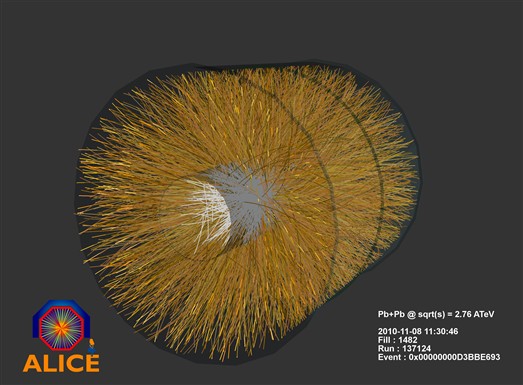Rolf Heuer
24 September 2010
A long period of machine development paid dividends last night with a game-changing fill in the LHC. As I write this, the fill, which started colliding at 19:00 yesterday evening, has just wound down. Both ATLAS and CMS have posted integrated luminosities of over 680 inverse nanobarns, and the initial luminosity for the fill doubles the previous record at 2×10[super]31[/super]cm-2s-1.
But it’s not the records that are important this time – it’s normal that in the start-up phase of a new machine, records will fall like autumn leaves – what’s significant here is that the LHC’s performance this fill significantly exceeded some crucial design parameters, opening up the path to much better still to come.
Last night’s fill was the first with 56 bunches arranged in trains of eight bunches per train. The significance of bunch train running is that we can configure the orbits such that more bunches collide in the experiments, so even though the number of bunches may not be much higher, the collision rate is. For example, last night’s 56-bunch fill had 47 bunches colliding at ATLAS, CMS and LHCb, with 16 colliding in ALICE, whose needs are lower. This compares to a maximum of 36 colliding bunches out of 48 total before we introduced bunch trains.
A big jump in luminosity was clearly expected in moving to bunch trains and colliding more bunches. What came as a pleasant surprise is that it was accompanied by an exceptional beam lifetime of 40 hours, and less disruption to the beams caused by packing more protons into a smaller space (in technical terms, the beam-beam tune shift was much less destructive to the beams than anticipated). This result means that the LHC operators have more leeway in operational parameters in the quest for higher luminosity.
The plan for today and the weekend is to run for one more fill with 56 bunches in trains of eight before moving on to 104 bunches in 13 trains of eight, with 93 bunches colliding in ATLAS and CMS. Ultimately, the LHC will run with 2808 bunches in each beam, so there’s still a long way to go. We’ll get there slowly but surely by adding bunches to each train until the trains meet in a single machine-filling train. That will take time, but for the moment, last night’s fill puts us well on the way to achieving the main objective for 2010: a luminosity of 10[super]32[/super]cm-2s-1










